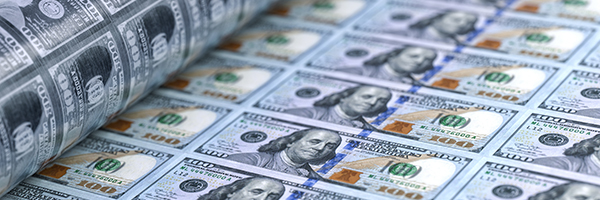Here’s my cheat sheet of what to watch for in Wednesday’s Dot Plot revision of the Federal Reserve’s forecasts for the rest of 2023 and 2024. The last revisions before this came at the Fed’s June meeting so there’s reason to think that the Fed will have something market-moving to say about how it sees the economy, interest rates, inflation, and unemployment trending over the next year and a half.
Back in June, the Fed had forecast one more interest rate increase in 2023 and one-percentage point of interest rate cuts (or four 25 basis-point rate cuts) in 2024.
It’s likely that the new Dot Plot will show the Fed still believes one more interest rate increase is needed in 2023–but the uptick in month-to-month core CPI inflation in August, could well reduce the number of anticipated interest rate cuts in 2024 from four to three.
This would be the dreaded “higher for longer” scenario that sends shivers across the financial markets. Prices and yields in the bond market have been moving away from a four-cut forecast toward the three-cut possibility. Today, September 18, the yield on the 10-year Treasury was flat at 4.33%, up 8 basis points in the last month. The yield on the 2-year Treasury, which tends to be the maturity most sensitive to changes in Fed policy, closed slightly higher at 5.05%.
In recent months swaps contracts linked to Fed decisions have moved to reflect 100 basis points of cuts. Earlier this year swaps priced in more than 150 basis points of cuts in 2024.
This change in the Dot Plot forecast could push yields on the 10-year Treasury to 4.50% by the end of 2023 or higher.
What else to watch for in the Dot Plot?
There’s also the big question of where the Fed will set its long-term policy interest rate. The projected floor on rates for the long-term has been 2.5% or lower since 2019. There’s some fear that the Fed will indicate that it doesn’t see interest rate cuts to reduce the Fed Funds rate to that level, but that the central bank will indicate a new long-term floor of 3.5%. A higher floor would mean fewer interest rate cuts in 2024, 2025, and 2026. The five-year overnight index swap rate, traded five years forward, a market proxy for the Fed long-run rate is now around 3.72%, up from from below 3% in May.
These pessimistic speculations are getting added traction from nervousness in the bond market that 2023 will finish in the red. That would come after the bond market took a real beating in 2022, turning in a 12.5% loss for the year. Right now the the market is roughly flat for the year after a fourth straight month of losses.


